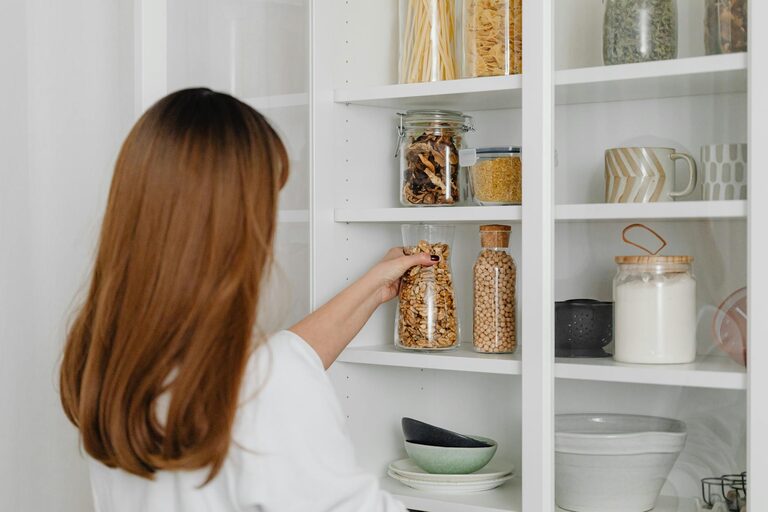Keeping your fridge and pantry tidy is a great way to reduce food waste, save time, and make meal preparation more enjoyable. When your storage is well-organized, it’s easier to find what you need and keep track of expiration dates. If you’ve ever opened your fridge only to be greeted by a mess of mismatched containers, or rummaged through a cluttered pantry without success, this guide is for you. Here’s how you can maintain a clean, organized, and efficient fridge and pantry with simple, practical steps.
Why Is a Tidy Fridge and Pantry Important?
Before diving into the how-to, it helps to understand why maintaining an organized fridge and pantry is beneficial:
– Reduce Food Waste: When food is easy to see and access, you’re less likely to forget about what you have and let it spoil.
– Save Money: Avoid buying duplicates or letting groceries expire by keeping track of what’s in storage.
– Ease Meal Prep: Finding ingredients quickly streamlines cooking and makes meal planning less stressful.
– Maintain Food Safety: Clean and organized storage helps prevent cross-contamination and keeps perishables fresh longer.
Step 1: Declutter and Clean Regularly
Before organizing, start fresh by cleaning and decluttering.
Remove Everything
Take all items out of your fridge and pantry. Check each for expiration dates, signs of spoilage, or damage.
Toss or Donate
Throw away expired or spoiled food. If you have unopened, unexpired items you won’t use, consider donating to a food bank.
Deep Clean
Wipe down shelves, drawers, and door compartments with a mild cleaner or a mix of water and vinegar. Dry completely before returning items.
Step 2: Categorize Your Items
Grouping similar foods together makes it easier to locate what you need.
Fridge Categories
– Dairy: milk, cheese, yogurt, butter
– Meat & Seafood: raw or cooked items (stored safely to prevent leaks)
– Fruits and Vegetables: using designated drawers or bins
– Condiments & Sauces: ketchup, mustard, salad dressings
– Ready-to-Eat Foods: leftovers, pre-prepared meals
– Beverages: juice, soda, water bottles
Pantry Categories
– Grains & Pasta: rice, quinoa, noodles
– Canned Goods: beans, soups, vegetables
– Baking Supplies: flour, sugar, baking powder
– Snacks: crackers, nuts, dried fruit
– Spices & Herbs: jars and containers for seasonings
– Oils & Vinegars: cooking oils, dressings
Step 3: Choose the Right Storage Solutions
The right containers and organizers can make all the difference.
Use Clear Containers
Store dry pantry goods like flour, sugar, and cereals in airtight, clear containers. This keeps food fresh and makes it easy to see when you’re running low.
Label Everything
Label shelves and containers with content and expiration dates. Labels help everyone in the household find and return items to their place.
Storage Bins and Baskets
Use bins or baskets in the fridge and pantry to corral similar items—for instance, place all snack packs in one bin for easy grabbing.
Utilize Door and Drawer Space
In the fridge, store frequently used items on the door shelves for easy reach. Use drawers for fruits and vegetables to maintain humidity levels and freshness.
Step 4: Organize Based on Use and Expiration
Place frequently used items at eye level or front for easy access. Less-used items can go on higher or lower shelves.
First In, First Out (FIFO) Method
When restocking, place new items behind older ones so you use up older food first, reducing waste.
Keep Ready-to-Eat Foods Visible
Leftovers and quick snacks should be easy to see to encourage timely consumption.
Step 5: Maintain Daily Habits
Organization isn’t a one-time task—it requires consistent care.
Quick Daily Check
Spend a few minutes each day scanning your fridge and pantry for spills, leaks, or expired items.
Clean Spills Immediately
Wipe spills and crumbs right away to prevent sticky messes and odors.
Return Items to Their Place
Encourage everyone in your household to put items back where they belong after use.
Plan Weekly Restocking
Take note of what you have before grocery shopping to avoid buying duplicates or missing essentials.
Bonus Tips for a Tidy Fridge and Pantry
– Use Lazy Susans: Great for condiments and small jars; they make items easy to reach.
– Invest in Adjustable Shelving: This allows you to customize space according to the size of your items.
– Keep a Trash or Compost Bin Nearby: Make it easy to discard expired items during grocery unpacking.
– Store Items by Temperature Needs: For example, keep eggs in the main fridge area rather than the cold door for more consistent temperature.
– Freeze Leftovers Promptly: If you won’t eat them soon, freezing preserves quality and reduces clutter.
—
Maintaining a tidy fridge and pantry takes a bit of planning and regular upkeep, but the benefits are well worth the effort. With a clean, organized space, you’ll save time, reduce food waste, and make cooking more enjoyable. Start today by decluttering and organizing, and soon keeping your kitchen storage tidy will become second nature!



